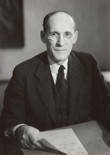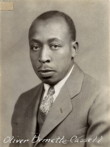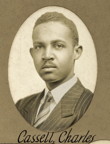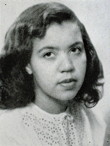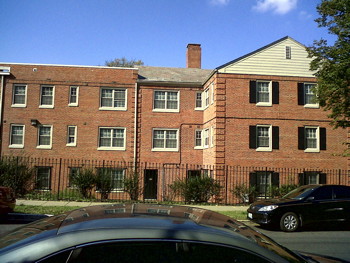PEOPLE
Building on opportunity: The Cassell family of architects

Founders Library at Howard University, Washington, D.C., designed by Albert Cassell. Image: Wikimedia Commons.
Albert I. Cassell, B.Arch. '19 (1895-1969), the university's second black architecture graduate, found opportunity at Cornell and encouraged his family to seek the same. The Cassells made a lasting mark on their professions, their communities and African-American history.
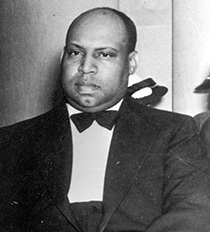
Albert I. Cassell, B.Arch '19. Image: Howard University. See larger image
"My father decided that all four of his children were going to be architects, and would go to his alma mater," Charles Cassell '46 said in a 2012 interview. "He was a remarkably driven individual and came from a very modest background. As an African-American in 1915 [a rarity in the study of architecture then], there were numerous obstacles," says Christine O'Malley, former assistant director of the Carol Tatkon Center, who is organizing a fall exhibition on the Cassell family with her husband, landscape architecture lecturer Marc Miller. Professor George Young, Jr., Albert Cassell's mentor. Image: Division of Rare and Manuscript Collections. See larger image "His [high school] counselors advised him to change his plans" to attend Cornell, Charles says. "His mother encouraged him to follow his desire. He borrowed money from [her] meager savings – she took in washing – moved to Ithaca, and spent a year there repeating his high school work. There was no question of his qualifying to be admitted." Oliver B. Cassell '29. Image: Division of Rare and Manuscript Collections. See larger image Albert's mentor, professor George Young Jr., would later remember his photographic memory and "his focus on nothing but his studies," Charles says. Albert left Cornell after two years to serve in WWI and received a war-awarded B.Arch. degree in 1921. He designed five Tuskegee Institute buildings with landscape architect William T. Hazel, then joined Howard University's faculty, became its architecture school's first dean and, as university architect, supervised design and construction of 11 Howard buildings. One of the District of Columbia's first licensed African-American architects, Albert fought against discrimination throughout his career. He purchased 500 acres on Chesapeake Bay in the 1930s and set out to build "a new city where African-Americans had no prejudice, where they could succeed based on their talents," Charles says. Prince Hall Masonic Temple, Washington, D.C., designed by Albert Cassell. Image: Wikimedia Commons. See larger image After political opposition in Congress derailed that project, a success followed in 1942-46: The 569-unit Mayfair Mansions in Washington, one of the country's first federally subsidized housing projects for African-Americans, now listed on the National Register of Historic Places. Charles Cassell '46. Image: Division of Rare and Manuscript Collections. See larger image Albert's brother, Oliver B. Cassell '29 (1903-79), a civil engineer, built bridges for New York state and worked with Albert on several projects in Washington before joining the D.C. Department of General Services.
Charles' younger sisters – Martha Cassell Thompson '47, B.Arch. '48 (1925-68) and Alberta '48, B.Arch. '49 (1926-2007) – "were the first African-American women to finish the school of architecture at Cornell," he says. Alberta Cassell '48, B.Arch. '49. Image: provided. See larger image After Cornell, Martha practiced in Missouri and then worked on architect Philip Frohman's Washington National Cathedral for several years. Alberta shared in an award for a redesign for the city of Ithaca in her senior year for a course-related project and later designed ships' quarters for the Navy in Washington. Albert's daughter Paula '76, born in 1954, also studied architecture at his alma mater. Martha Cassell Thompson '47, B.Arch. '48. Image: Division of Rare and Manuscript Collections. See larger image Like his father, Charles also left Cornell to go to war, in 1944, training as a Tuskegee Airman. After WWII he earned a degree at Rensselaer Polytechnic Institute in 1951 and designed Navy and Veterans Administration hospitals and other buildings in the 1950s. "After that, I became active in civil rights," Charles says. He won a seat in the District of Columbia's first school board election and founded the D.C. Council of Black Architects to address a lack of equity in building projects funded by (mostly black) district taxpayers. Mayfair Mansions in Washington, D.C., designed by Albert Cassell. Image: Wikimedia Commons. See larger image "[We] put pressure on the government ... and we were successful," he says. "And things got better and better. One thing those of us involved in civil rights are proud of is the fact that we eliminated a lot of the discrimination in that city." Charles also chaired the D.C. Historic Preservation Review Board and supervised design and construction of six University of the District of Columbia buildings before retiring in 1988. Now 90 and a fellow of the American Institute of Architects, he consults on architecture, urban planning and historic preservation. "Building a Legacy: The Cassell Family and Cornell" will be displayed Nov. 10-14 in Tjaden Hall's Experimental Gallery, with additional images projected onto White Hall, the original home of the Cornell College of Architecture.